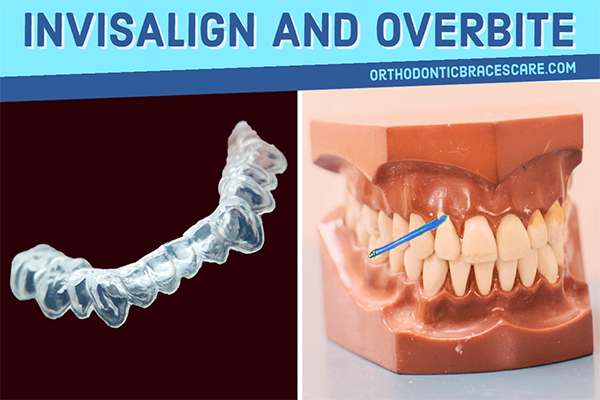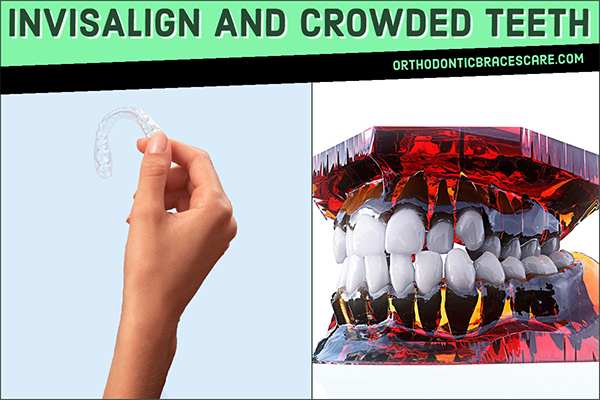When you have a gummy smile, you may want to have Invisalign fix it. But, question is, can Invisalign clear aligner help a gummy smile?
Invisalign can help improve the appearance of a gummy smile when a gummy smile is due to misaligned teeth or minor jawbone issues. By moving the teeth into their proper positions, Invisalign can help reduce the amount of gum that is visible when you smile. Invisalign can fix the same types of gummy smiles as braces can.
But, whether you can get Invisalign varies from person to person.
If you are interested in learning more about Invisalign and how it can help you achieve the smile you’ve always wanted, contact a dentist consultation.
However, in this article, you’ll know about how Invisalign fixes a gummy smile, and its benefits and drawbacks, alternatives to Invisalign.
How can Invisalign fix a gummy smile?
Before you know about the relation between Invisalign and the gummy smile, you need to know, “What is a gummy smile?”
A gummy smile is when your upper lip seems to rise too high when you smile, making your gum line visible. This can happen if you have extra gum tissue, short teeth, or both. A gummy smile can affect how you feel about your smile and may make you self-conscious.
If you’re not happy with your gummy smile, there are treatments available to help. Your dentist can use special tools to remove excess gum tissue.
You can also braces or clear aligners such as Invisalign to fix the condition. In some cases, you may need surgery to correct the problem.
Now, let’s know how Invisalign fixes a gummy smile.
Invisalign can fix a gummy smile by gradually moving your teeth into the correct position. This process takes time, so you will need to be patient. In some cases, your dentist may recommend that you have gum surgery to remove excess tissue and make your smile look more even.
However, Invisalign can usually correct a gummy smile without the need for surgery if it’s due to misaligned teeth or orthodontic problems.
For Invisalign treatment, you’ll need to wear a series of clear, plastic aligners that are custom-made for your mouth. You have to wear each aligner for about two weeks before moving on to the next one in the series.
As you progress through the treatment, your teeth will gradually move into the desired position.
The length of time that you will need to wear Invisalign will vary depending on the severity of your gummy smile and teeth misalignment.
In most cases, treatment takes about 12 months. However, some people may need to wear Invisalign for a longer period of time.
Benefits of Invisalign to fix gummy smiles
There are many benefits of Invisalign for fixing gummy smiles, including the fact that it is nearly invisible. This means that you can straighten your teeth without anyone knowing that you are wearing aligners.
Invisalign is also removable, so you can take them out to eat, brush your teeth, and floss. This is a major advantage over traditional braces, which can be difficult to keep clean.
Invisalign is also more comfortable than braces. There are no wires or brackets that can rub against your gums and cause irritation.
And, since Invisalign aligners are made from smooth plastic, they are less likely to cause mouth sores than metal braces.
Disadvantages of Invisalign to fix gummy smiles
The main disadvantage of Invisalign to fix gummy smiles is all cases of gummy smiles can not be fixed with it. This is because Invisalign can only correct gummy smiles due to misaligned teeth. If your gummy smile is due to the position of your jaw, Invisalign will not be able to help.
Moreover, Invisalign can fix gummy smiles that occur as a result of excessive gums, gum disease, certain medications, or other medical conditions.
Besides that, sometimes Invisalign can also be more expensive than traditional braces.
When Invisalign can fix gummy smiles?
Before you know when Invisalign can fix gummy smiles, you should know about the causes of gummy smiles.
There are many reasons why someone might have a gummy smile. It could be due to the way their teeth are shaped, how their teeth are aligned, how their jawbone is aligned, or the function of their muscles. It could also be caused by certain medical conditions, such as cleft palate or Down syndrome.
Invisalign can correct a gummy smile that can occur due to the following causes:
- Teeth shaped in a way that makes them look longer than they are
- Crowded or crooked teeth
- Teeth not the right size or shape for your mouth
- Mild jawbone problem
- Protruded or retruded teeth
However, when your gummy smile is due to the following causes, Invisalign can’t correct that.
- Improper oral hygiene
- Severe jaw bone problem
- Function of muscles
- Certain medical conditions
- Certain medications
If you’re not sure what’s causing your gummy smile, talk to your dentist or orthodontist. They can help you figure out what’s causing it and what treatment options are available.
Alternative to Invisalign to fix a gummy smile
Here are substitutes for Invisalign to fix a gummy smile.
1. Braces
This is the traditional way to fix a gummy smile and has been around for many years. It is effective but can be quite noticeable.
Braces can help to align your teeth and jaw so that your smile looks more balanced.
2. Veneers or crowns
If you are looking for a more cosmetic solution, then veneers or crowns may be the best option for you. This involves placing a thin porcelain shell over your teeth to cover up the gum tissue. and
Veneers can be used to create a more aesthetically pleasing smile and can also help to improve the function of your teeth.
3. Root planning and scaling
This is a dental procedure that is used to clean the teeth and remove any tartar or plaque that has built up. It can also help to reduce the size of the gums and give you a more even smile.
4. Laser gum contouring
This is a newer treatment that uses a laser to remove excess gum tissue and give you a more even smile. It is less invasive than veneers or crowns and can be done in just one office visit.
5. Gingivectomy
This is a surgical procedure that involves removing excess gum tissue from around your teeth. This can help to expose more of the tooth surface and give the appearance of a less gummy smile.
6. Lip surgery
This is a surgical procedure that is used to change the shape of the lips. It can be used to reduce the size of the gums and give you a more even smile.
7. Crown-lengthening surgery
This is a surgical procedure that is used to remove excess gum tissue and expose more of the tooth. It is a more invasive option but can be very effective in correcting a gummy smile.
8. Botox injections
This is a non-surgical option that involves injecting certain medication into the muscles that control the movement of your lips. This can help to relax the muscles and give the appearance of a less gummy smile.
9. Orthodontic surgery
This is a surgical option that can be used to correct severe cases of a gummy smile. It involves repositioning the bones and muscles around your teeth and jaws. This option should only be considered if other treatments have been unsuccessful.
This jaw surgery is used to correct the alignment of your jaw. This can help reduce the amount of gum that shows when you smile.
Can Invisalign cause a gummy smile?
Invisalign can cause a gummy smile in some patients. This is because of the poor oral hygiene that is associated with Invisalign. When plaque and tartar build up on the teeth, it can cause the gums to become inflamed and swollen. This can make the gums appear to be larger than they actually are, which can give the appearance of a gummy smile.
What to do If Invisalign causes a gummy smile?
If Invisalign has caused a gummy smile, the first thing you should do is contact your orthodontist or dentist. They will be able to assess the situation and determine if there is anything that can be done to correct the problem. If Invisalign is the cause of your gummy smile, they may recommend that you switch to a different type of braces or aligners.
If your gummy smile is not caused by Invisalign, they may recommend other treatments, such as gum surgery, to help improve the appearance of your smile.
However, in order to avoid this, it is important to brush and floss regularly and to see your dentist for regular cleanings. You can also rinse your mouth with mouthwash to get rid of this problem.
Conclusion
If a gummy smile occurs as a result of crooked, retruded, or protruded teeth, Invisalign can fix it effectively. It can also be used to fix gummy smiles that are caused by teeth that are too small or too big.
Invisalign can help fix a gummy smile by gradually moving your teeth into the right position. This can give you a more attractive and confident smile.
If you are considering Invisalign to fix your gummy smile, be sure to talk to your orthodontist or dentist to see if it is the right treatment for you.
Pallab Kishore is a certified dentist and the owner of Orthodontic Braces Care.
He completed BDS in 2014. Now, he is an MS resident in Orthodontics, BSMMU. He likes content writing and has 12+ years of experience in blogging.


